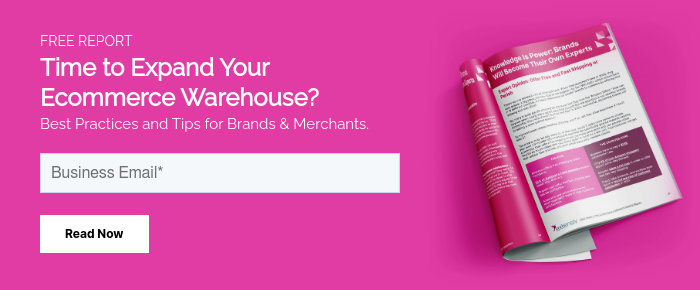Starting an E-commerce Business: An E-commerce Checklist to Make Your Launch Go Smoothly
If you are looking to take advantage of this exploding market and start your own business, it is going to take a lot of hard work. Having the layout of how to start an E-commerce business can help to make everything easier to handle.
Here is a checklist for starting an E-commerce business.
1. Develop Goals and Objectives
When creating a business, one of the first things you should do is come up with goals. These goals should be specific, measurable, achievable, realistic, and have a time period. Having these types of goals will give you targets to aim for and give you a clear path on how to get there.
2. Think of Your Business Name
Coming up with a business name is one of the first steps in the business development process. It is something that is going to be unique but also aligns with your business. There are many different options you can choose from when naming your business. You could name it based on a particular place that has meaning to you, something to do with your name, or something to do with the product you are selling. It is also important to remember to keep your name short and to the point, as this will lead to fewer typing errors when customers are searching for you and allows them to remember it.
Another critical factor is being sure that the name you choose is available to you on different social media platforms. You don’t want to have a name chosen and find out that people on Instagram and Facebook are already using that name.
3. Get Your Domain Name
After you choose your business name, the next step is going to be choosing a domain name. This should be unique as it identifies your website.
In most cases, people will just use their business name as their domain name, but if that is not available to you, you should choose one that is related to your business.
When you purchase a domain name, it can be bought from a domain provider online.
There are a few things that you want to consider when you are choosing yours.
- It shouldn’t be too long
- It should be easy to spell
- People should be able to remember it easily
- It should represent your brand and business
You also need to understand other elements to make this decision, such as the differences between subdomains and domains, so that you can pick precisely the right combination for your up-and-coming e-commerce project. It may seem like a trivial aspect of what makes a successful site, but in reality it is one of the most pivotal early steps.
4. Register your Domain
Once you get your domain name, you need to register your domain from a domain registrar and enter details like your name, address, email, phone number, etc.
You have the ability to register your domain on your own by filling out paperwork from the IRS on your own.
If you are not comfortable with doing that on your own, you can also get help from a web hosting domain.
5. Apply for Your Business Licenses and Permits
In order to operate an E-commerce business, it is necessary for you to have certain business licenses and permits. To get those licenses and permits, you need to check with the county, city, or state to see what type of sales tax licenses are needed and to get approved for those before you begin operating your business.
Different rules may vary depending on your state. For instance, you would require a Florida business license in Florida in the case of an LLC, whereas California LLC does not have a standard state license. To find what is required from your state, you can look at your State’s Department of Revenue Services, or a lawyer.
If your E-commerce business is being started in the United States, you are going to need an Employer Identification Number so you can open a business bank account in order to file your taxes. This number is unique and identifies your business and is necessary for paperwork.
Not every state has a sales tax, but most states do have tax exemptions with certain items such as food and clothing.
If you are selling products that are monitored by industry such as medicines and other healthcare products, you need to check with your state on whether or not you need to be licensed in order to sell these products.
6. Build & Design Your Website
Your website should be built in a way that allows customers to understand what you are selling and where they can find everything easily. It should be designed in such a way that will grab the attention of the visitor and keep them entertained enough to stay on your page longer.
Good website design, easy navigation, and high-quality photographs will help to make people more willing to buy from you.
In addition, it is crucial to prioritize site speed and uptime, as they significantly impact the success of your ecommerce website. Opting for ecommerce hosting can be immensely helpful in achieving these goals.
The website may be the biggest expense for starting your ecommerce business. Still, it is worth considering allocating additional funds to create a visually appealing and user-friendly website for your customers.
7. Support Multiple Web Browsers and Mobile Devices
When your website is being designed properly from a trusted web designer, be sure to check with your designer and ask if the site is working properly along with multiple browsers.
One of the most important things to have for your website is accessibility and responsiveness from mobile devices like cell phones, iPads, etc. as these are the platforms where a majority of your searches will come from.
8. Include Pages Like ‘Terms & Conditions’ and ‘Shipping & Returns’
It is important for you to have a page for terms and conditions on your website not just for customers to see, but to protect your business. Unless you are getting and collecting personal data from your customers like email addresses, names, and shipping addresses, this is not required by law.
You should also be sure to include a link to your shipping and returns policy somewhere on your homepage for visitors to access. Customers are not always aware of the costs of shipping charges when they make an order so giving them this information can be very useful to them. It may also lead to more people abandoning their shopping cart because they were not aware of these rates.
You should also be sure to leave your customers something on the homepage for your return policy and give them a better picture of what that whole process will look like.
9. Get a Credit Card Processing System
Setting up a credit card system on your website is easy. The most common methods of accepting credit card payments are by using your own merchant account or using payment accounts like PayPal.
10. Define Your Target Market
In order to run a successful E-commerce business, you need to have a defined target market. This is crucial because getting a lot of traffic on your site doesn’t mean anything if they are not interested in what you are offering them.
Your goal should be to get a lot of traffic that is targeted in your specific industry. By doing this, you are able to find people who are interested in your brand and products and engage with your brand and eventually buy from you. This will also help you to increase your Return on Investment and prevent you from wasting your efforts on people who are not interested in your brand.
11. Find Possible Promoters
After you have identified your target audience, you need to look into people who could act as promoters and advocates for your brand. This means their job will be working to make your brand known and spread the word about your business.
10. Look at SEO to Build Your Business
Seo is a great tool for you to optimize your website for Google and other search engines and is something that would help you build up your business with your specific target market.
When it comes to creating content for your search engine, it is always valuable and worth it as it will bring more people to your page and will help you get above your competition in search results.
11. Promote Your Business Before Launching
Before you launch your website, it is a great idea for you to promote your business on social media. To do this, you can set up a Facebook page or Instagram page for your business and start to advertise online a little before you are ready to launch it.
This will help people to see what you and your business are offering and get them interested in your product.
12. Get your Inventory Stocked
When a person makes an order, they are used to fast delivery. Before your business goes live, be sure that you have your inventory stocked and ready for business. This will help you to deliver the goods on-time and get your business good reviews and a reputation that people can trust.
13. Get an Inventory Management System like Extensiv Warehouse Manager
When you own a business, you need to stay on top of things all day and night. A reliable software like Extensiv Warehouse Manager will help you to get all the information you need at a glance of your smartphone and save you time, energy, and money. You are able to get alerts on your inventory and get warnings even before you start running low. Learn more about Extensiv Warehouse Manager here.
14. Launching Your E-commerce Business
Now, it’s time to launch your business. Everything is not going to be perfect, but it should be good enough to get you going in the right direction. If you have a product that people want and are paying for, you can improve the website anytime you like.
Hopefully, this helps you get off and running on starting an E-commerce business. These 14 steps can help give your company a good start with a good first impression among customers.







